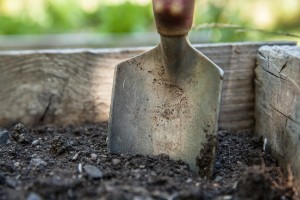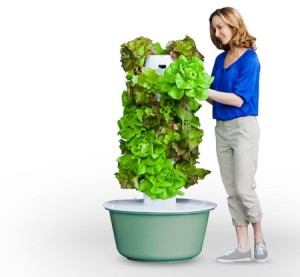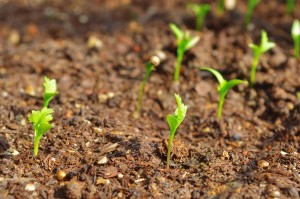Start at a very Small Level:
Keep in Mind: It’s better to be a proud owner of a tiny garden than to be frustrated by a giant one!
Many beginner gardeners make the mistake of planting too much too soon, and way more than anybody could consume or want.
Start Smart!:
Arrange Tools and Plants
Prepare your tools so everything is ready when things start growing. Pick new plants for the garden. Order perennials, trees, and shrubs for spring planting and buy good-quality seeds. Seed packets are less expensive than individual plants.
Simply choose a patch of land in your yard that gets good sunlight and mark it off.
Survey the Yard
Maintain large trees. Cut down the previous year’s perennial foliage, and toss it into the compost pile. Check fences, steps, and pathways for damage caused by freezing and thawing.
Then you can begin to remove the grass in that area with a machine.
Cut down grass

Image Source : Fix.com
Send the mower and leaf blower for servicing, or if you have the right tools, sharpen the mower blades yourself. Install fresh spark plugs and refill your mower with oil. Clear the lawn of winter debris. Also, make sure to check the area that needs reseeding, before you start mowing.
Shrubs and Prune Trees
Prune damaged wood after plants resume spring growth. Remove dead, diseased, and damaged, branches from woody plants.
Take a Soil Test
If you think that your plants aren’t growing as fast as they should, you might need to check the pH level of your soil. If it’s too high or too low, it can mean acidic or basic soil. But don’t worry, all you need is to apply a small amount of standard lime to neutralize the acid. Also, add more organic fertilizers and find plants that do well in alkaline situations, if you find your soil has too high pH.
Planting Tips:

Plant in a sunny location. Vegetables need at least 6 hours of daily direct sunlight. The more sunlight they receive, the greater the harvest you can yield, and the better the taste will be.
You will need nice loamy soil because plants’ roots penetrate soft soil easily. Enriching your soil with compost provides needed nutrients. Ensure that water doesn’t collects on top of the drains and doesn’t flows away too quickly either.
Your crops should be spaced properly. For example, if you are growing corn, it will need a lot of space. Make sure to space them out enough so that taller plants won’t overshadow shorter vegetables. Plants set too close together compete for water, sunlight, and nutrition and fail to mature.
Plant bare-root trees, perennials and shrubs, such as daylilies and hostas by early spring. Select a cool, cloudy day if possible. Transplant plants in a container during the growing season. However, don’t move plants in the middle of summer, and be sure to thoroughly water them. Sowing some seeds of cool-season flowers and vegetable would be excellent at this time, like sweet peas and calendula, and vegetables such as lettuce, parsley, and spinach.
Plant Care:
Be careful not to spray water too hard. If you do at this point, you can wash the small seeds out of their rows!
At this point most of the hard work is done. You need to make sure that you take good care of your plants. You should water your soil regularly, add mulch or organic compost, and keep bugs away.
Make sure you keep your garden moist and cool with a garden sprinkler during the dry spells and also keep weeds from taking over!
Most gardeners with lots of experience, cut the bottoms off of plastic milk cartons, and cover over the plants to keep away cutworms. This is also a great way to help protect tender plants in the event of a late and unexpected frost!
Conclusion:
Growing plants in your own garden can be exciting.if you are a new gardener, now is the best time to try it. Make it a spring project and enjoy the benefits.

Do it Yourself!:
Would you like to learn more about organic gardening? Build a vertical aquaponic veggie and fish farm. Also try Juice Plus Tower Garden. For more help with farming, give us a call at 303-495-3705 . or Click Here to book a meeting with us. We’d appreciate your feedback. Please include your comments in the comment box beneath or visit our Facebook page. Thanks!

Source: Nourish the Planet



